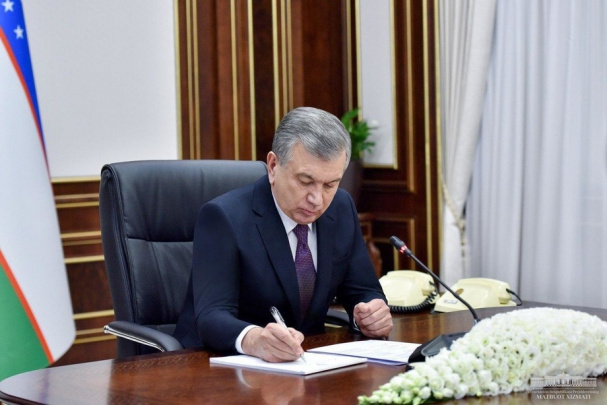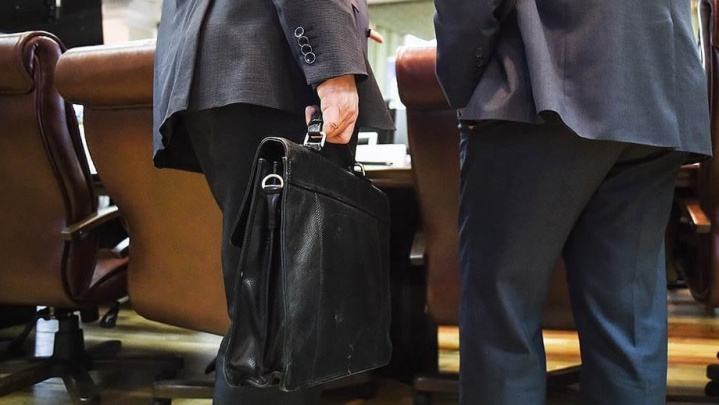Proposal: Employees should be allowed to work less time in abnormal heat
In many countries, when the temperature outside and in the office reaches a certain level, work is stopped and employees are sent back home, and it is clearly defined at what temperature the working hours will be reduced. Similar norms should be included in the legislation of Uzbekistan.

In recent days, people of Uzbekistan are feeling the heat in their bodies. This raises one of the age-old question once again: how right is it for workers to work in the heat?
Anomalous weather records
Uzhydromet said that the weather in Uzbekistan has been 2-4 degrees above average in recent days, but this is not an anomalous phenomenon for the Central Asian climate, especially in recent years.
Every year, photos of thermometers in different regions of Uzbekistan are spread on social networks. Among them are photos of temperatures recorded much higher than official weather data. However, these figures have not yet been officially recognized.
As Uzhydromet reported to Kun.uz, the hottest day in June was June 21, 1914 in Termez district of Surkhandarya region, where the temperature was 49.6 degrees. The absolute record for heat was set at the Oyokogitma meteorological station in Bukhara region on July 29, 1983, when the temperature was +49.8 degrees.
On June 3, it was +38.2 degrees. Earlier, the hottest day on this date was observed in 1895 (+37.8). +39.2 degrees on June 4 (in 1900, +38.3 degrees), +41.6 degrees on June 5 (in 2008, +38.6 degrees), +42.6 degrees on June 6 (in 1911, + 38.5 degrees), and on June 7 the temperature was +40.8 degrees (in 1894, +39.7 degrees). The temperature in Uzbekistan on May 31 also reached an absolute maximum.
In short, the climate is changing. In the temperature rise infographics, the curves tend to go upwards. This can be seen in the analysis of all observational data in the example of Uzbekistan.
What are the consequences of working in the heat?
On June 25, the summer heat began in Uzbekistan. This period, which lasts until August 5, is hot and dry by nature. The reason is that by this time, the sun is rising to the highest point of the northern hemisphere, warming the earth beyond measure. Nevertheless, markets, businesses and organizations will continue to operate.
Working in the heat can have negative consequences. Not everyone travels to work in an air-conditioned car, and there are many workers not only sit in the office all day, but also walk in the sun, according to the requirements of the profession.
- Walking in the heat can cause sunstroke, the head of the department of the Tashkent Medical Academy, Doctor of Medical Sciences Nargiza Nurillayeva, says.
Doctors say that the heart rate increases, blood pressure rises, peripheral blood vessels dilate, and the legs swell when overheated. In such cases, vigorous physical activity is not recommended. Physical activity should be kept to a minimum. For example, it is not possible to work by bending or tilting the head. In such cases, blood circulation in the brain is disrupted. This leads to a sudden rise in blood pressure, loss of consciousness and the risk of stroke.
Experts recommend stopping any physical activity immediately if you experience shortness of breath, changes in heart rate, weakness and dizziness.
So, do workers have the right not to go to work if the heat seems to pose a health risk? Does the law provide for this? At a time when anomalous temperature records are being updated from year to year, the importance of this issue is becoming more urgent than ever.
International experience
Our studies show that there are significant differences between international and national legislation on the procedure for working in hot conditions, ensuring the protection of workers’ rights.
For example, in the legislation of many states, it is clearly stated at what temperature the working hours will be reduced. They also mention that the work is suspended when the air temperature reaches a certain degree in the office or outside.
Belarus
In Belarus, the maximum temperature is 30-34 degrees. According to the labor legislation of the republic, office workers who sit at the computer all day have the right to work less than an hour when the room temperature reaches +28.5 degrees, and even leave the workplace without warning the supervisor when the temperature exceeds the established norms.
Russia
Article 212 of the Labor Code of the Russian Federation sets standards for work in hot weather, which requires employers to provide employees with normal and safe working conditions. According to sanitary norms, a temperature of 16 to 25 degrees is acceptable, depending on the season and the physical activity of the staff. If the thermometers are above the set limit, a number of obligations arise on the employer.
In particular, during abnormally hot weather, the employer should provide air conditioning in the workplace, allow employees to take breaks and rest, extend lunch time, provide short-term paid leave, allow employees to work from home depending on the situation, reduce production activities.
Those who work outdoors in the heat should wear special protective clothing. If the temperature is close to 37 degrees, then working outdoors is not recommended.
In both Belarus and Russia, employers can be fined or suspended for a period of time if they ignore the microclimate standards of the buildings in which they work.
Germany
When extreme high temperatures are observed in Germany, additional days off may be declared in schools and businesses. If it is decided at the federal level that students will not go to school in the heat, the cancellation of the working day in enterprises and organizations will be decided by the company’s management.
According to German labor law, the air temperature in the premises where employees work should not exceed +26 degrees. If the room temperature exceeds +30 degrees, the employer must take measures to cool the room.
National legislation needs to be amended
In 2016, the issue was raised in the media and social networks, when the Ministry of Labor clarified the issue of releasing employees in hot weather in Uzbekistan. According to the Ministry, in accordance with the microclimate sanitary and hygienic standards of production associations approved by the Chief Sanitary Doctor of Uzbekistan, for light physical work performed indoors, the optimal microclimate during the cold and transition periods of the year should be as follows:
Air temperature – 20–23 degrees, relative humidity – 40–60%, the speed of air movement should be no more than 0.2 m/s. At the same time, the air temperature should be 19-25 degrees, relative humidity should not more than 75%, air velocity is allowed not to exceed 0.3m/s.
In our opinion, as in international practice, our national legislation should set an average norm for office and outdoor workers, clearly define the number of hours to be reduced when the temperature rises, and the right of employees not to work in the heat.
In addition, the obligations of employers in hot weather conditions should be clearly reflected in the legislation, and liability for non-compliance should be established.
Related News

12:04 / 25.12.2025
President signs decree approving additional days off and holiday shifts for 2026

17:27 / 19.05.2025
Minors could be permitted to work in service and manual jobs under new draft law

18:02 / 18.11.2024
Uzbekistan defines exceptions for relatives working together in state institutions

19:36 / 16.09.2024



